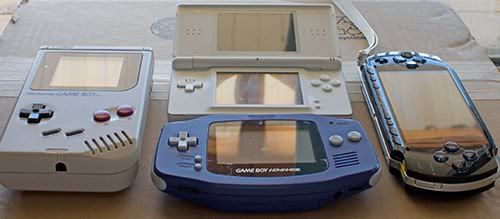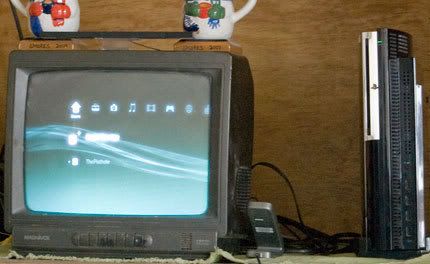The earliest video games in existence were nothing more than crude lines mixed with transparent overlays, controlled by simple nobs. Over the many decades since they have evolved, growing more and more complex. The result is of course the games and hardware we have today. Now some would say that we're at the pinnacle... that the only thing that can be improved now is graphics. I believe they're wrong. There are many new ideas and technologies. either existing already or on the horizon, that I think could enhance not only the way we interact with our games, but also how are games interact with us. What follows are just a few examples...
Interaction
Motion Tracking
Basically what this does is track the exact position of the controller compared to its surrounding. This should not be confused with motion sensing, which can only determine the tilt and acceleration of a controller. With actual tracking, one could reach out with their controller and have the character make the same move, 1:1. Or you could wave your controllers in the air to get a NPC's attention (just as you would an actual person in real life). The possibilities are vast.
I should note that I'm using the word "controller" very loosely in this case. You see there are two ways to implement this sort of control: The first is by actually holding (or wearing) a pair of controllers, and then these would be sensed. The other method is to use a camera and some really smart software to track the player's gestures... effectively making your bare hands the controller.
Touch Screens
I know, strictly speaking touch screen have been used to game since before even the Nintendo DS. That doesn't mean that there isn't any room for improvement here. For starters, until recently we've only been able to use one part of the screen at a time. Also unless you count a wacom penscreen (which needs a special stylus to work), touchscreens only sense where you tap, not how hard (pressure). The technology to resolve these limitations either already exists (as with the former), or will very soon (latter).
Eye Tracking
So the first couple controls I mentioned still have one thing in common with existing methods: They both basically use your hands and wrists. This next one departs from the notion that these are the only ways to interact. What eye tracking does is it pinpoints exactly where your focus currently is on the screen. This could speed up your response time in shooters by having it aim exactly where you're looking at the time. More than that though, it could effect how the game responds. For example, if you look a character straight in the eye they'll treat you with more respect, and perhaps be persuaded to help. If on the other hand you focus on their cleavage, you might just be slapped in the virtual face. :P
BTW, you can find an interesting demonstration of eye tracking in action here.
Voice Recognition
I imagine many of you have tried voice controls at some point in time. I can also imagine you being disappointed with the results. Well there is good news: The technology is getter better. Eventually it'll be just as reliable as pushing a button.
Anyways... while I certainty think many games could be build solely around the idea of voice control, many more could be augmented by it. In an RTS game you could control what's on screen in a more conventional manor, whilst simultaneously ordering offscreen platoons into action (without ever taking your eyes off of what you're doing). Adventure and RPG titles could actually have you speak to the NPCs, rather than selecting from a list. Things would get really interesting if the game could distinguish the mood in your voice, and again use this to determine how to react.
Perception
3D Display
Since the dawn of their creation, there has been one basic truth with televisions and displays in general: The image they produce is essentially flat to the naked eyes. Well this is all set to change. Soon there'll be televisions and monitors on the market that can display depth without the need for dorky looking glasses. Sounds like nothing but a fantasy? Take a look for yourself:
[biosmagazine] Philips Introduces 22" 3D Display
[engadget] Philips introducing 52-inch 1080p 3d display
[engadget] Worlds largest 3d display revealed in 4d spacetime
Imagine actually being able to sense how far away an opponent is on screen. Or how far an object you're trying to grab is from your character (in this way the technology could compliment motion tracking).
---
Well that's all for now... all I'll write about that is, not all there is period. I may add to this blog another time.



Log in to comment